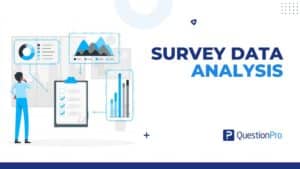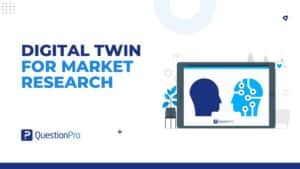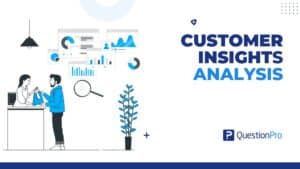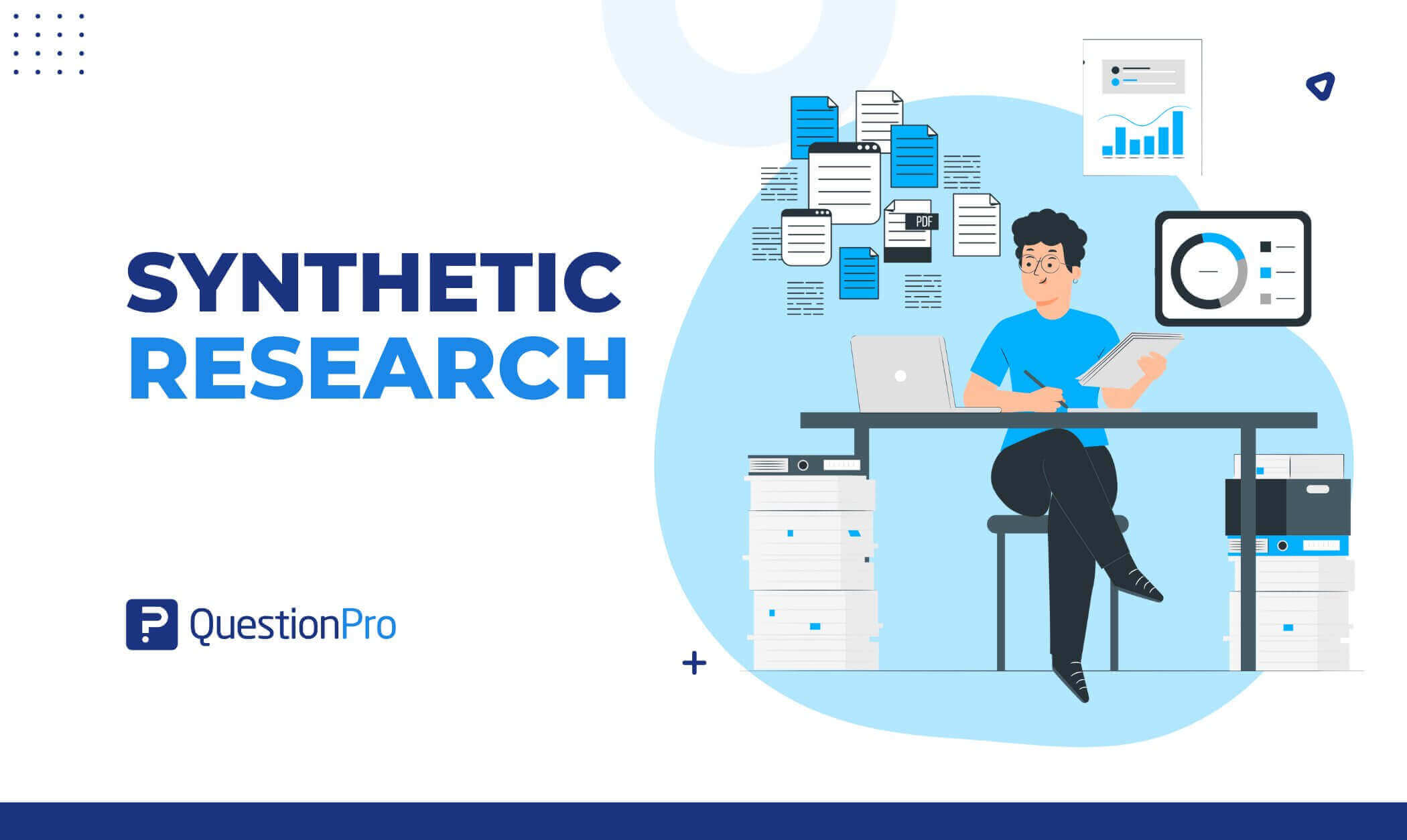
Imagine solving challenges like pandemics, financial crashes, or biased AI without risking lives, money, or fairness. By using synthetic research, you can simulate these complex techniques in virtual backgrounds.
It’s like having a practice world where we can run endless experiments without real-world risks or limitations. Need to test something sensitive? Try it with synthetic data first. Waiting for real data to come in? Generate what you need instantly.
In this article, we’ll explore how synthetic research’s game-changing approaches transform fields. We’ll look at use cases, explain how synthetic research works, and show why it might be the future of research.
What is Synthetic Research?
Synthetic research is an advanced method of conducting research that uses fake data instead of real-world data to test theories and solve problems. It’s like building a practice world to solve real problems.
This “fake-but-realistic” data is created using new tools like AI. For example, doctors can use synthetic patient records to study rare diseases without touching real health data. Self-driving cars learn to navigate dangerous roads by practicing in virtual worlds filled with synthetic traffic and weather.
It’s not about replacing real data. It’s about expanding the possibilities of research. From healthcare to climate science, synthetic research is helping us ask bigger questions and get safer, faster answers.
Why Synthetic Research Matters!
Synthetic research isn’t just a novelty in a world drowning in data but starving for usable insights. It’s a necessity.
Here’s why it’s transforming industries and redefining what’s possible:
1. Privacy Without Compromise
Real-world data contains sensitive information, such as patient health records, financial transactions, and personal identities. Synthetic research lets you study these topics without touching real data, so you can comply with strict regulations like GDPR and HIPAA.
Example: Hospitals can analyze synthetic patient records to study disease patterns without compromising individual privacy.
2. Democratizing Innovation
Traditional research excludes smaller players. Collecting massive datasets is expensive and time-consuming. Synthetic research levels the playing field:
- Startups can generate data to compete with industry giants.
- Researchers in developing countries can bypass infrastructure limitations.
3. Fixing AI’s Blind Spots
AI models trained on biased or limited real-world data perpetuate inequalities (e.g., facial recognition errors for darker skin tones). Synthetic data can fill the gaps, creating balanced datasets to build fairer, more accurate AI.
4. Speed Meets Scalability
Need data for a niche study? Waiting years to collect real-world results isn’t practical. Synthetic research delivers:
- Instant datasets: Generate millions of data points in minutes.
- Iterate faster: Test hypotheses, refine models, and repeat without delays.
How Synthetic Research Works?
Synthetic research is like building a digital twin of reality—a safe, customizable replica of the real world where experiments can run risk-free. Here’s a step-by-step breakdown of how it happens:
1. It Starts with Real-World Patterns
Researchers first analyze existing data (e.g., patient records and financial transactions) to identify patterns, relationships, and statistical trends. This becomes the blueprint for creating synthetic data.
Example: Studying 1,000 real patient records to learn how age, location, and genetics influence disease progression.
2. Choose Your Toolbox
Different methods generate synthetic data depending on the goal:
- AI/Generative Models: Tools like GANs (Generative Adversarial Networks) create hyper-realistic data (e.g., fake patient records that mimic real ones).
- Agent-Based Modeling: Simulate interactions between “agents” (e.g., people, cells, traders) to study complex systems like economies or pandemics.
- Rule-Based Systems: Manually define parameters to model specific scenarios.
3. Generate & Validate
The system produces synthetic datasets, which are rigorously tested to ensure they:
- Preserve Patterns: Mimic statistical trends of real data (e.g., income distribution in a population).
- Avoid Copying: No real individual’s data is replicated (critical for privacy).
- Pass the “Turing Test”: Experts can’t easily distinguish synthetic data from real data.
4. Apply & Iterate
Researchers use the synthetic data to:
- Train AI Models: Teach algorithms to recognize diseases or predict stock trends.
- Stress-Test Systems: Simulate crises (e.g., cyberattacks, supply chain collapses).
- Explore “What-Ifs”: Model hypothetical scenarios (e.g., climate policies, new drug side effects).
If the results seem off, they tweak the synthetic data and repeat the process.
Key Applications of Synthetic Research
Synthetic research is changing how industries innovate, analyze, and solve problems.
Here are its most impactful applications, powered by cutting-edge tools like synthetic data generation and artificial intelligence:
1. Train Robust Machine Learning Models
- Solve data scarcity: Can generate synthetic samples as training data to build accurate machine-learning models when real-world data is limited or biased.
- Improve data quality: Add diverse artificial data to datasets to reduce ethnicity, geography, or behavior gaps.
Example: Training cancer-detection AI with synthetic medical images for rare tumor types.
2. Market Research & Consumer Behaviour Insights
- Simulate synthetic users: Model consumer behavior for risk-free market research on new products, ads, or pricing strategies.
- Hybrid studies: Can combine qualitative research (e.g., simulated focus groups) with quantitative research (e.g., synthetic survey data) for deeper insights.
Example: Predicting how a luxury car launch would perform with Gen Z buyers using synthetic demographic profiles.
3. Ethical User Research & Prototyping
- Test designs safely: Can use synthetic users to do user research on apps, websites, or products without exposing real people to prototypes.
- Scale data collection: Can rapidly generate synthetic samples for niche or global audiences.
Example: A fintech startup tests its app with synthetic profiles of elderly users before public launch.
4. Privacy-Compliant Data Sharing
- Replace sensitive data: Can share artificial data that mirrors real patterns without exposing personal information, GDPR/CCPA compliant.
- Collaborate freely: Researchers worldwide can access synthetic datasets for studies on public health or social inequality.
5. Speed up Qualitative Research
- Uncover hidden biases: Can use synthetic data generation for qualitative research to create edge cases (e.g., rare user personas).
- Refine surveys: Pre-test questions on synthetic populations to eliminate ambiguities before collecting large-scale data.
Synthetic research turns data challenges into breakthroughs. Creating artificial yet realistic datasets powers safer simulations, unbiased AI, and faster discoveries, proving innovation thrives where real-world limits end.
Use Cases of Synthetic Data Research
Traditional methods have limitations, and synthetic data addresses them by balancing data privacy, cost-effectiveness, and innovation
Here are the most impactful applications:

1. Medical Research
Synthetic data helps medical research by replacing human participants with high-quality synthetic data that matches real data patterns.
For example, researchers studying rare diseases can generate synthetic patient records to simulate clinical trials, avoiding ethical concerns and data collection delays. This approach protects confidential data, like drug trial results, while allowing collaboration across institutions.
2. Data Collection
The research process becomes faster and safer with synthetic alternatives to real data. Companies can simulate consumer behavior with data generated artificially, reducing the need for costly research studies that involve sensitive customer information.
For example, a retail brand can test pricing strategies with synthetic purchase histories instead of risking confidential data leaks. This hybrid approach keeps data private while delivering results.
3. Augmenting Real Data
Data augmentation with synthetic datasets fills gaps in small or biased datasets, improving the insights generated by AI models.
For example, blend synthetic weather simulations with real historical data to predict extreme events more accurately. By combining artificial and traditional methods, researchers achieve cost-effectiveness without sacrificing statistical relevance.
Synthetic data research turns limitations into opportunities, delivering cost-effective, private alternatives to traditional methods while enhancing real data insights.
Challenges in Synthetic Research
Synthetic research (using artificial data or simulations) is powerful in fields like healthcare, finance, and tech. But to use it well, researchers must strike a tricky balance between technical ambition, ethical responsibility, and real-world practicality.
Here’s what’s standing in the way and how we might move forward.
- Realism vs Simplicity
It’s a constant tug-of-war. How do you make models realistic enough to reflect messy real-life problems but simple enough that humans can actually understand them and computers can run them without melting down?
If you make the model too simple, you will miss important details. If you make it too complex, it will become a confusing black box.
- Ethical Issues
If the data used to train synthetic systems is biased, they can accidentally continue promoting unfair stereotypes, like favoring one group over another in healthcare decisions or loan approvals.
- Technical Barriers
- Costly computing: Creating high-quality synthetic data or simulations isn’t cheap. Smaller teams often get priced out.
- Skill gaps: Few people have the right mix of skills, such as AI know-how, ethics training, and expertise in fields like medicine or law.
There’s no magic fix. By focusing on clarity, sharing resources, and planning for ethical pitfalls upfront, we can make synthetic research safer, fairer, and more useful for everyone.
The Future of Synthetic Research
Synthetic research is balanced to reshape industries from healthcare to quantum tech, but its success hinges on how we drive innovation responsibly. Here’s what’s coming next:
1. Key Trends
- AI-Powered Synthetic Ecosystems: Imagine AI systems that automatically generate, test, and refine synthetic data or models in real-time. These ecosystems could accelerate drug discovery, climate modeling, and other breakthroughs, but they’ll need guardrails to prevent misuse.
- Regulatory Frameworks: As synthetic tools grow more powerful, governments and industries are racing to draft rules. Think “ethics committees” for AI-generated data, transparency standards, and laws to curb deepfakes or biased algorithms.
2. Industry Predictions
- Quantum Computing Leap: Synthetic research will likely fuel quantum advancements by simulating quantum environments (like molecular interactions) long before physical quantum computers are ready.
- Adoption in Emerging Fields: Startups and labs will use synthetic models to tackle problems that are too risky, expensive, or time-consuming in the real world, such as testing fusion energy designs or brain-inspired AI systems.
The future isn’t just about smarter tech. It’s about building trust. Collaboration between scientists, policymakers, and the public will decide whether synthetic research becomes a force for good or a source of new risks.
How QuestionPro Advances Synthetic Research
QuestionPro Research Suite empowers researchers to:
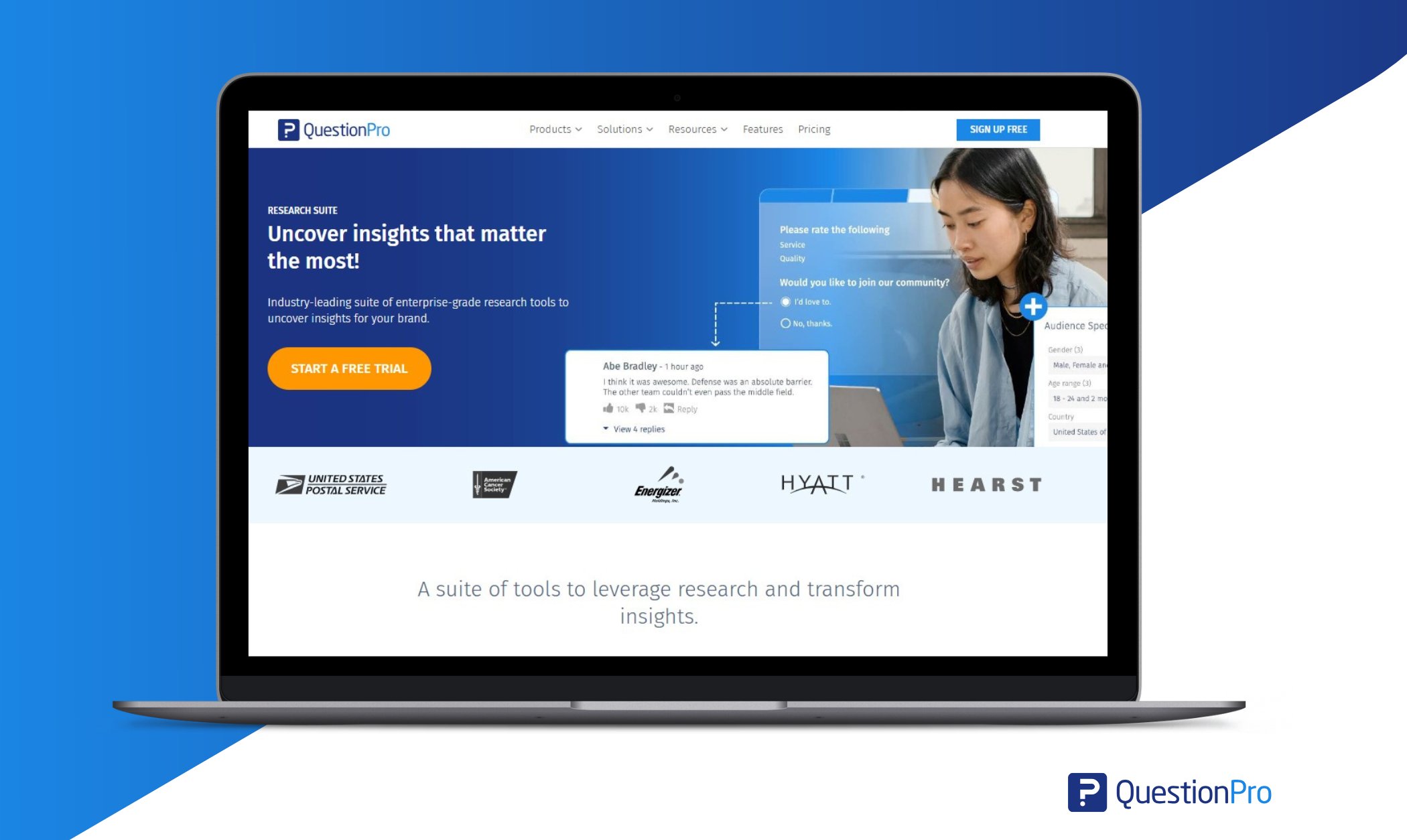
- Pre-Test Surveys: Simulate thousands of synthetic respondents to refine questions, eliminate bias, and predict real-world response patterns before launching costly studies.
- Model Niche Populations: Generate data for hard-to-reach groups (like patients with rare diseases, high-net-worth investors) without incurring privacy risks.
- Stress-test hypotheses: Run “what-if” scenarios (like policy changes, product launches) using synthetic data that mimics real human decision-making.
- Accelerate Compliance: Automatically anonymize sensitive survey data while preserving critical insights for GDPR/HIPAA-regulated fields.
Real-World Example
A market researcher can use QuestionPro:
- To generate synthetic consumer profiles (age, income, shopping habits).
- Test ad campaigns on this virtual audience to predict engagement.
- Validate results with real data.
QuestionPro can hold this position as the gold standard for synthetic research in surveys and behavioral studies. It can align with your goal to highlight its strengths!
Conclusion
By creating data and simulations that mirror reality without its risks, researchers can explore scenarios they once thought impossible, unethical, or just plain impractical.
As AI-powered tools improve and quantum computing becomes a reality, synthetic research will become indispensable. Platforms like QuestionPro show us what that future looks like. They let researchers simulate, validate, and refine their ideas at a pace that feels almost fluid.
Synthetic research is more than a method for addressing data scarcity or privacy laws. It’s the connection between imagination and reality. Where else can you test the limits of what’s possible and then turn those possibilities into solutions? The question is no longer “What if?” but “What’s next?” Synthetic research is the key to answering it.
Frequently Asked Questions(FAQs)
Answer: Synthetic research is an advanced method of conducting research that uses fake data instead of real-world data to test theories and solve problems. It’s like building a practice world to solve real problems.
Answer: Synthetic research introduces critical risks: bias amplification (where flaws in original data are exacerbated), oversimplification (models neglecting real-world complexity), and misuse (e.g., generating deepfakes or fraudulent data). Combating these threats necessitates rigorous validation, transparent design practices, and enforceable ethical frameworks.
Answer: When properly validated, synthetic data preserves the statistical patterns of real data while avoiding replication of sensitive details. However, its reliability depends on the quality of the generative models and rigorous testing to ensure it mirrors real-world complexity without bias.
Answer: No! It’s a complementary tool. Synthetic data helps fill gaps, test hypotheses, and simulate edge cases, but real-world validation remains critical. Hybrid approaches, which combine synthetic and real data, often yield the best results.
Answer: Key tools include generative AI (e.g., GANs, VAEs) for text/images, agent-based modeling for systems like pandemics, and platforms like QuestionPro for survey responses. Choices depend on your case needs and ethical goals.




